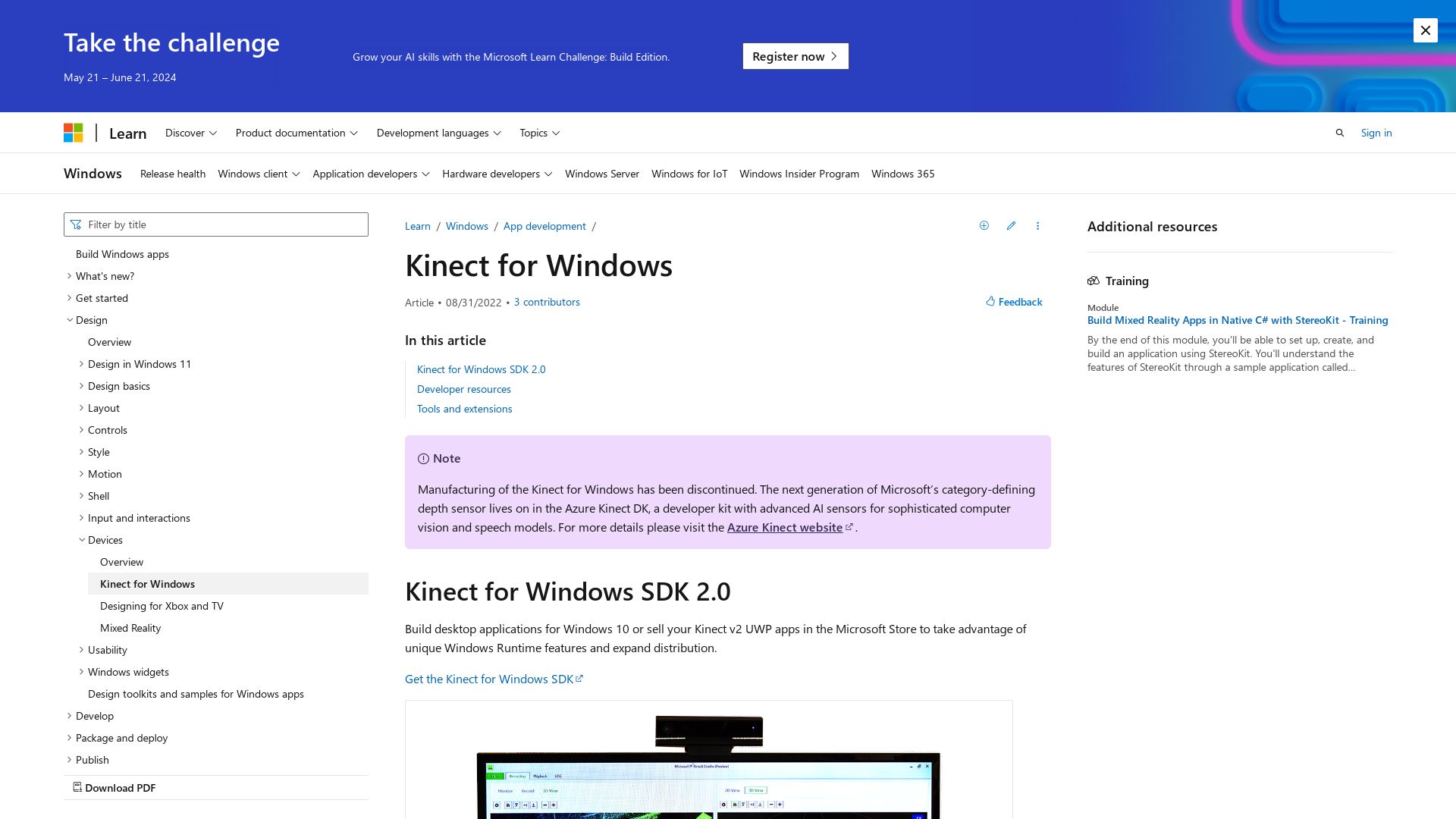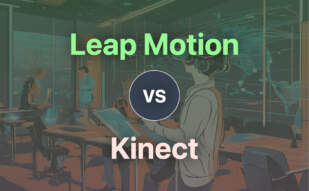Leap Motion was founded in 2010 by Michael Buckwald and David Holz. They specialize in computer hardware sensor devices for hand and finger motions as input. The company launched its first product on May 21, 2012, after initially distributing 12,000 units to developers. Known for enhancing VR experiences and more, Leap Motion was acquired by Ultrahaptics in May 2019, becoming Ultraleap.

When exploring options beyond Leap Motion, one can consider Ultraleap, MediaPipe, and Kinect as alternatives in the realm of innovative tech.
Ultraleap

Meet Ultraleap, a technological prodigy borne from the union of Leap Motion and Ultrahaptics in 2019. This company is a specialist in hand tracking and haptic technology, meaning it can make you feel like you’re touching thin air. Pretty cool, right?
Ultraleap’s Best Features
- The melding of interface design, acoustics, machine learning, and computer vision that lets you play with digital content like it’s your favorite toy.
- They added a bit of weight loss to their Leap Motion Controller. Not only is it 30% smaller, but it’s also lost 25% of its power needs. Now that’s a healthy diet.
- Experience ultra-fine VR experiences with partners such as Pico and integrates with Lenovo’s ‘ThinkReality VRX’ headset. Trust me, it’s immersive like diving into an ocean of pixels.
| Expert Squad | Partnerships | Significant Achievements |
|---|---|---|
| Anders Hakfelt, Alain Bismuth, Tom Carter and more. | ASUS, Hewlett Packard, Best Buy, Newegg, Amazon. | Sold over 1M units of original Leap Motion Controller |
Ultraleap Downsides
- While wearing the crown of being an expert in haptic technology, they have had some hiccups with initially underachieving in sales.
- Orion software: It’s progressive, yes. But as the old human proverb goes, nobody’s perfect.
Ultraleap Pricing
Currently, Leap Motion Controller 2 is up for pre-order at a price that even Scrooge would love: $139 (USD). Quite a bargain, isn’t it?
Ultraleap Use Cases
Use Case 1: Training Tools
Ultraleap’s technology has been applied in training tools proving that learning with technology can be as fun as popping bubble wrap.
Use Case 2: Art and Music Expression
Unleash your creativity in novel ways with applications for art and music expression. Paint your masterpiece in the air, or conduct a symphony of bytes!
Use Case 3: VTuber Presenters and Game Developers
For those VTubers out there and game developers, Ultraleap offers a fresh canvas for innovative interactivity. It’s time to weave in some magic with your keyboard!
MediaPipe
Engineered by the tech titan Google, MediaPipe is a novel cross-platform pipeline framework currently in alpha stage, primarily used for the swift prototyping of perception pipelines and the deployment of reusable components across diverse hardware platforms. Being open-source and licensed under Apache 2.0, it is created for custom machine learning solutions dealing with live, streaming sensory data, such as video and audio.
MediaPipe Top Features
- Integrated into the Viso Suite enterprise computer vision platform for no-code development, infrastructural scaling, edge device management, and model training.
- Adds value with end-to-end acceleration that optimizes hardware utilization for ML inference and video processing (GPU, CPU, TPU).
- Strengthens the build once, deploy anywhere concept by allowing deployment on diverse platforms: Android, iOS, edge, cloud, web, IoT.
- Flexible execution APIs written in C++, Java, and Obj-C.
- Feature-rich Tracer module for granular visibility into packet flows.
| Feature | Description |
|---|---|
| OpenCV integration | Depends on OpenCV for video handling, ensuring high-quality multimedia processing. |
| Prebuilt ML solutions | Including pre-trained TFLite models that are ready for immediate application. |
| Graph | A powerful mechanism for designing packet flow paths between nodes, optimizing processing as per application needs. |
MediaPipe Limitations
- Currently in alpha stage, translating to potential vulnerabilities and instability.
- Dependent on FFMPEG for audio data handling, which may limit application flexibility.
- Primarily engineered for rapid prototyping; may not suit all production-level application demands.
MediaPipe Use Cases
Use case 1: Rapid Prototyping
MediaPipe is primed for developers and enterprises seeking a quick and efficient solution for developing robust prototypes of AI model inferencing applications.
Use case 2: Multimodal Data Processing
The framework seamlessly handles performance optimization and synchronization for multimodal graphs, making it a practical solution for companies dealing with diverse multimedia data.
Use case 3: Cross-Platform Deployment
MediaPipe’s build-once-deploy-anywhere feature is beneficial for organizations aiming for streamline application deployment across multiple digital ecosystems.
Kinect

Developed by Microsoft, Kinect has evolved from mere rumors of a motion-controller technology to a smash-hit product that has surpassed original sales estimates, reaching 1 million units sold in less than two weeks after its North American launch in 2010. Its functionality ranges from recognizing gesture-based controls to tracking objects, showcasing a valuable evolution in Kinect’s progress and bolstering Microsoft’s image as an innovative software giant.
Kinect Top Features
- Functions based on gesture-based controls and object tracking
- Uses a dual camera setup equipped with a special infrared light source, four microphones, and signal processing hardware
- RGB camera with a 640×480 resolution and a 24-bit color range
- Compatible with Three.js, a JavaScript library used to create animated 3D graphics
- Supports WebGL 2.0 since version 118, and Kinect for Windows SDK 2.0
- Provides a variety of sensor features such as Effects, Scenes, Cameras, Animation, Lights, Materials, Shaders, Objects, Geometry, Import/export, Utilities, Support, and Debugging
| Feature | Description |
|---|---|
| Number of Cameras | Two, outfitted with a special infrared light source, four microphones, and signal processing hardware. |
| Resolution | RGB camera with a resolution of 640×480 and a 24-bit color range. |
| Creation of 3D graphics | It’s compatible with Three.js JavaScript library, enabling GPU-accelerated 3D animations. |
Kinect Limitations
- Despite its advanced features, Kinect may face issues related to sensitivity and accuracy
- The need for an ample amount of space for optimum results
- Dependence on appropriate lighting
Kinect Use Cases
Use case 1
Being compatible with Three.js, a JavaScript library used to create animated 3D graphics, Kinect is useful in developing interactive and engaging web content, gaming applications, and virtual reality experiences.
Use case 2
With its gesture-based tracking and object recognition, Kinect can be utilized for motion-capture and animation, providing an affordable and novice-friendly option for small studios and independent creators.
Use case 3
The integration of Kinect in Windows 10 via the Kinect for Windows SDK 2.0, makes it an excellent tool for creating desktop applications that incorporate interactive graphics and motion-sensing capabilities.
Patrick Daugherty
Content writer @ Aircada. Merging AR expertise with a love for late-night gaming sessions.





